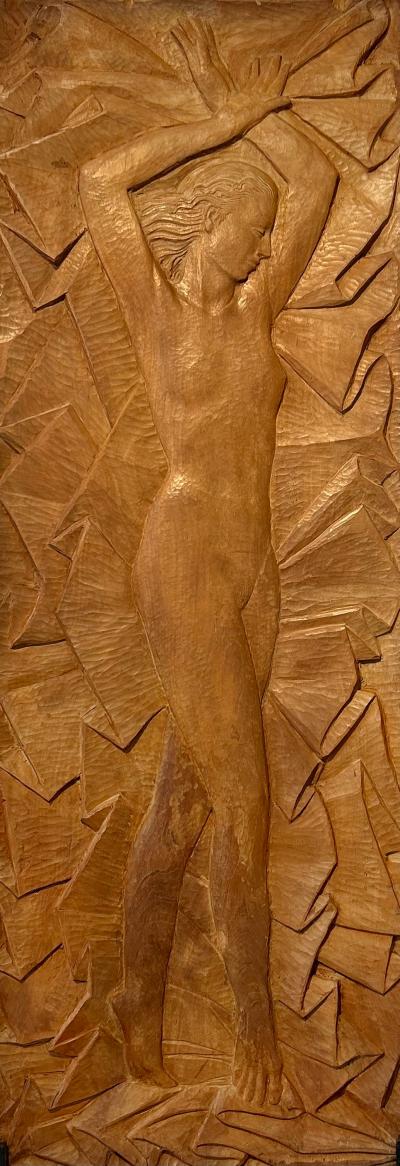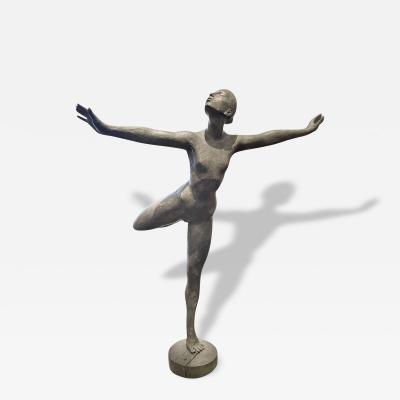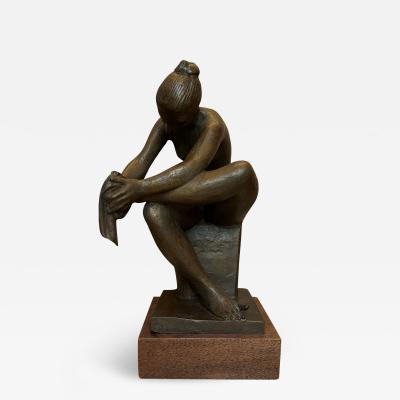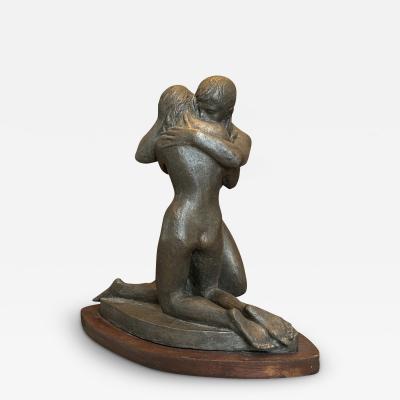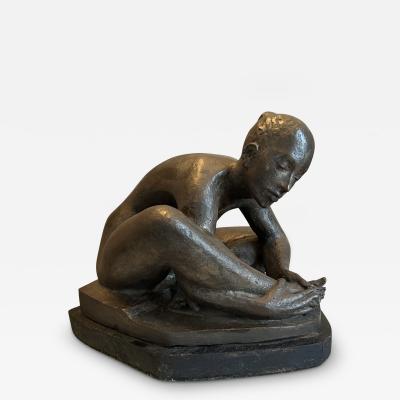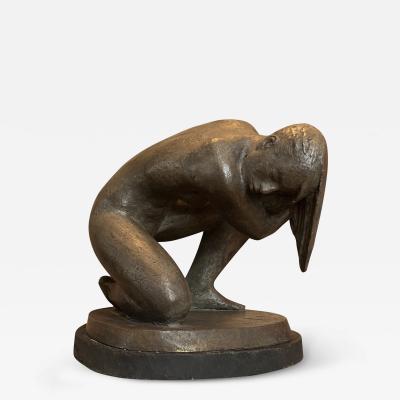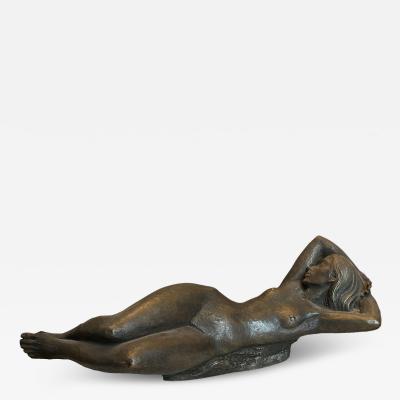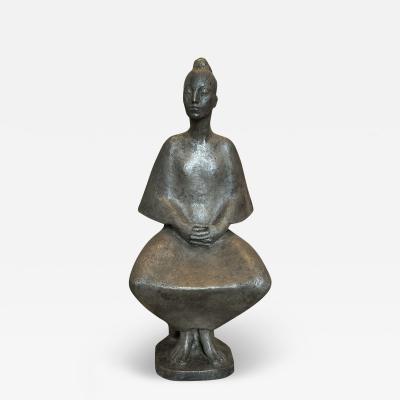Enrique G. Alferez
Mexican, 1901 - 1999
Enrique Alférez (1903–1999) was a prominent Mexican artist known for his mastery in sculpting architectural reliefs and the human form. Born in Zacatecas, Mexico, he lived nearly the entire 20th century, with his journey beginning in a rural village where his father, a skilled woodworker, introduced him to sculpture. At just 12, he was conscripted into the Constitutional Army during the Mexican Revolution. By 1920, seeking new opportunities, he emigrated to Texas, where he worked as a photographer's assistant and attended a transformative lecture by art teacher Lorado Taft. Encouraged by Taft, he moved to Chicago to study art from 1927 to 1929.
In 1929, Alférez settled in New Orleans, Louisiana, where he would spend almost 70 years. He married an American, Margaret, and together they had a daughter. His artistic legacy is prominently displayed across the city, featuring Art Deco figurative sculptures, monuments, fountains, and architectural details that range from the Central Business District to Lake Pontchartrain.
Alférez's sculptures often focused on the human form, particularly the female figure. He was a modernist who balanced realism with classical influences, carefully revealing character through physical features. His work aimed to capture emotion, individuality, and the relationships between his subjects. Many of his pieces also incorporated metaphor, allegory, and myth, adding depth to his artistic narrative.
His notable works include the "Molly Marine" statue, the first American sculpture depicting a woman in military uniform, and a fountain at New Orleans Lakefront Airport. His sculptures and reliefs adorn various locations, including the New Orleans Museum of Art, the Ogden Museum of Southern Art, and the New Orleans Botanical Garden.
Throughout his life, Alférez remained active as both a working artist and an educator. His influence is enduring, exemplified by the Helis Foundation Enrique Alférez Sculpture Garden located within the New Orleans Botanical Garden, which features over 20 of his sculptures. Alférez's legacy continues to inspire and enrich the cultural landscape of New Orleans.
In 1929, Alférez settled in New Orleans, Louisiana, where he would spend almost 70 years. He married an American, Margaret, and together they had a daughter. His artistic legacy is prominently displayed across the city, featuring Art Deco figurative sculptures, monuments, fountains, and architectural details that range from the Central Business District to Lake Pontchartrain.
Alférez's sculptures often focused on the human form, particularly the female figure. He was a modernist who balanced realism with classical influences, carefully revealing character through physical features. His work aimed to capture emotion, individuality, and the relationships between his subjects. Many of his pieces also incorporated metaphor, allegory, and myth, adding depth to his artistic narrative.
His notable works include the "Molly Marine" statue, the first American sculpture depicting a woman in military uniform, and a fountain at New Orleans Lakefront Airport. His sculptures and reliefs adorn various locations, including the New Orleans Museum of Art, the Ogden Museum of Southern Art, and the New Orleans Botanical Garden.
Throughout his life, Alférez remained active as both a working artist and an educator. His influence is enduring, exemplified by the Helis Foundation Enrique Alférez Sculpture Garden located within the New Orleans Botanical Garden, which features over 20 of his sculptures. Alférez's legacy continues to inspire and enrich the cultural landscape of New Orleans.
